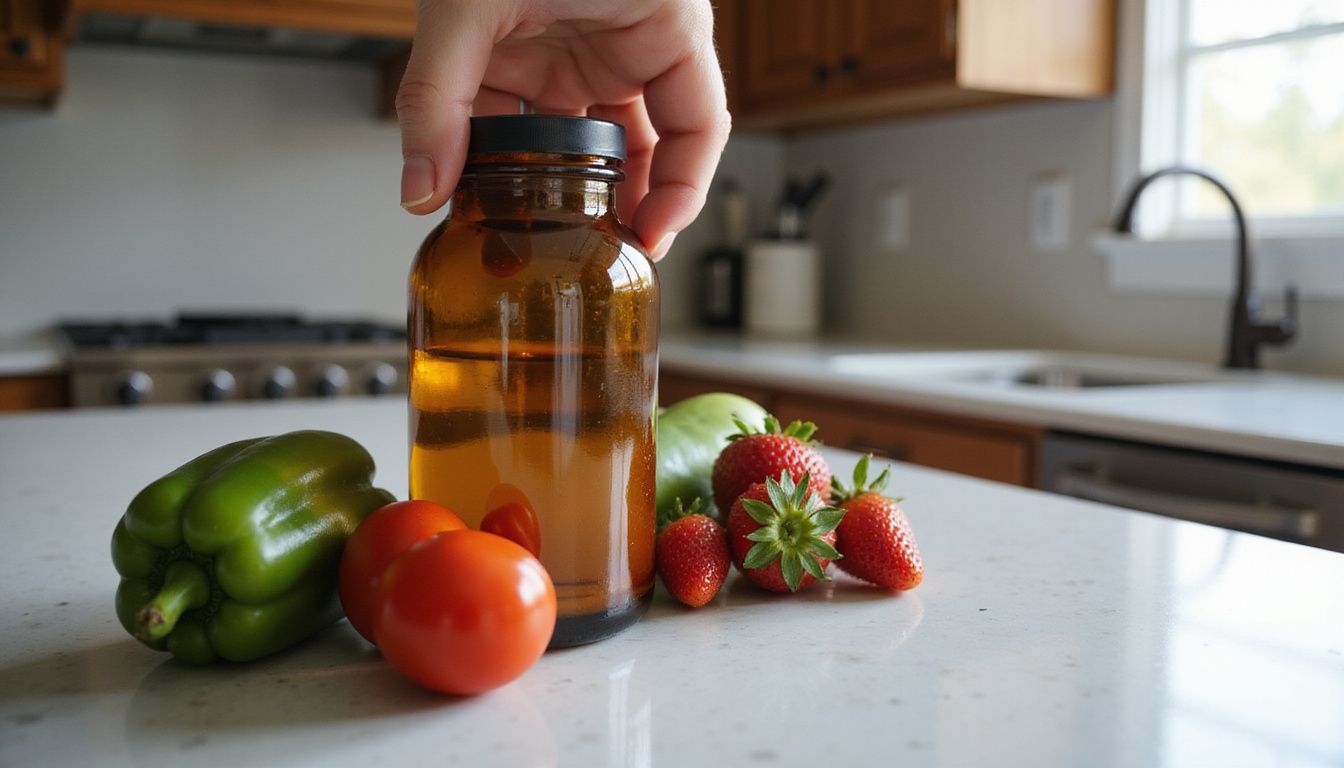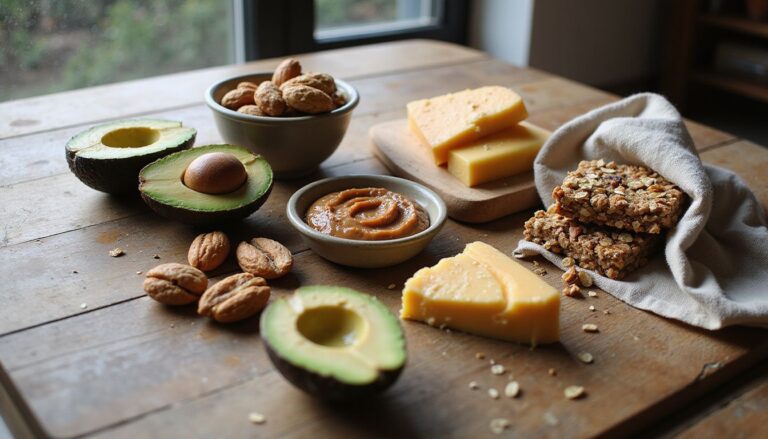Can Jardiance Cause Weight Loss?
Our Nutrition Assistant AI Suite will transform your body. You will lose fat, get toned, and build muscle. Gain confidence and optimal health.
If weight has been hard to manage while treating diabetes, you may wonder whether Jardiance cause weight loss. Research suggests many adults taking Jardiance, also called empagliflozin, lose about 4 to 6 pounds in six months. It is not FDA approved for weight control, but modest loss can still occur.
This guide explains how Jardiance works, what clinical trials show about body weight, and what results you can expect. Keep reading to see if Jardiance could support your health goals.
Key Takeaways
- Jardiance, or empagliflozin, can lead to modest weight loss of about 4 to 6 pounds, roughly 3 percent over six months. The effect comes from increased loss of glucose in urine.
- In trials, Jardiance with metformin showed greater average weight loss, up to about 3.9 percent of starting weight after one year.
- Weight changes are most noticeable in the first six weeks, first from water loss then fat loss. Results are smaller than with GLP-1 receptor agonists such as Ozempic.
- Jardiance is not FDA approved for weight loss. It is approved for type 2 diabetes, heart failure, and chronic kidney disease.
- Common side effects include more urination, dehydration, and urinary tract infections. Rare risks include ketoacidosis. Work with your healthcare provider while taking this medicine.

What is Jardiance and How Is It Used?

Jardiance is a prescription drug used to lower blood sugar in adults with type 2 diabetes. Some people also notice weight loss while taking it. Doctors may also use it to lower the risk of heart-related death in certain patients.
What is Jardiance?
Jardiance, the brand name for empagliflozin, is a once-daily tablet in 10 mg and 25 mg strengths. It belongs to a drug class called SGLT2 inhibitors. These medicines act on the kidneys to change how glucose is handled.
Doctors prescribe Jardiance to improve blood sugar control in type 2 diabetes. The drug’s active effects last about 12 hours, and small amounts can remain for up to three days.
It is made by Boehringer Ingelheim Pharmaceuticals. Jardiance is not FDA approved for weight loss, yet some users report modest reductions in weight.
What Medical Conditions Does Jardiance Treat?
Jardiance is FDA approved to treat type 2 diabetes, heart failure, and chronic kidney disease. In diabetes care, it helps lower blood sugar as part of a broader plan that includes diet and activity.
It also reduces the risk of cardiovascular death in people with heart failure and supports kidney health in chronic kidney disease. It is not approved for type 1 diabetes because of a higher risk of diabetic ketoacidosis, a dangerous acid buildup in the blood.
Many healthcare providers recommend Jardiance for its combined heart and kidney benefits. Clinical research shows better kidney outcomes after about one year of therapy in eligible patients.
These uses extend beyond blood sugar control. They target conditions that often occur with type 2 diabetes, such as cardiovascular disease and kidney damage.
How Does Jardiance Work in the Body?
Jardiance is part of the SGLT2 inhibitor class and lowers blood sugar through the kidneys. That same process can also contribute to gradual weight loss.
How Does Jardiance Affect the Body?
Effects begin within the first day. Jardiance blocks the sodium-glucose cotransporter 2 protein in the kidneys, so less glucose is reabsorbed back into the blood.
Extra glucose leaves through urine. This lowers blood sugar and creates a small daily calorie loss.
Over time, blood pressure may improve, and A1C, a three-month average of blood sugar, may drop by about 1 percent. The medicine also lowers the risk of cardiovascular death and slows kidney disease in certain patients.
In my first month on Jardiance, bathroom trips increased, which my clinician said to expect. Hydration helped, and my fasting numbers improved within weeks.
What is SGLT2 Inhibition and Its Role?
SGLT2 inhibition blocks a kidney transport protein called sodium-glucose cotransporter 2. This protein normally reabsorbs sugar from urine back into the bloodstream.
When it is blocked, more glucose is removed in urine. That helps lower blood sugar and also reduces daily calories, which can support weight loss over time.
SGLT2 inhibitors work differently from GLP-1 drugs. Weight changes tend to be modest and steady rather than large and fast.
A friend started Jardiance for diabetes and saw an early drop on the scale from water and sugar loss. Later, the loss slowed to a steady pace as body fat changes kicked in.
Jardiance belongs to a class of medications that supports weight loss by increasing the amount of glucose lost in urine.
Can Jardiance Cause Weight Loss?
Many people ask whether Jardiance cause weight loss and how much they can expect. Trials show consistent, gradual changes in body weight for many users.
Is Weight Loss a Common Side Effect of Jardiance?
Yes. Weight loss is a common side effect for adults taking Jardiance. Average loss is about 3 percent of starting weight in six months, often 4 to 6 pounds. Some people lose more when they add diet changes and regular exercise.
Early changes often reflect water loss, since sugar in urine pulls water with it. Weight loss is typically smaller than with GLP-1 receptor agonists such as semaglutide or tirzepatide. Results vary widely and depend on health, habits, and dose.
What Do Studies Say About Jardiance and Weight Loss?
Clinical trials report modest but measurable loss in most users. One 24-week study showed an average 2.8 percent reduction with 10 mg and 3.2 percent with 25 mg. That often equals 4 to 6 pounds over six months.
Longer studies support these outcomes. In a 52-week trial of Jardiance plus metformin, average loss reached about 3.9 percent. Results published by Anker, S.D., and colleagues in 2021 show similar trends in heart failure groups.
Loss of body fat becomes more noticeable after five to six months, especially with healthy eating and activity. Compared with GLP-1 drugs, results are smaller but can still help with weight management.
What Weight Loss Results Can Jardiance Users Expect?
Clinical research finds that many patients with type 2 diabetes experienced weight loss while using Jardiance. Actual results depend on your starting weight, diet, activity, dose, and other health factors.
How Much Weight Loss Is Seen in Clinical Trials?
In six months, average loss ranges from 4 to 6 pounds. One 24-week trial showed a 2.8 percent drop with 10 mg and 3.2 percent with 25 mg.
For a person at 200 pounds, 3 percent equals about 6 pounds in that time frame. With strong lifestyle changes, some report losses above 12 pounds in six months.
Expect faster changes early from water and sugar loss. Fat loss tends to build with steady use and healthy routines.
Combining Jardiance with metformin can yield more reduction, with averages near 3.9 percent over 52 weeks. Many factors shape these results.
What Factors Affect Weight Loss with Jardiance?
Diet and exercise drive outcomes. The medicine works best when paired with a balanced eating plan and regular activity.
Early weight change often reflects diuresis, which means fluid loss. Over time, fat loss plays a bigger role. Combining Jardiance with metformin may increase results for some people. Starting weight, kidney function, and other diabetes medicines also matter.
Consistent dosing, tracking progress, and steady lifestyle habits help you get the most benefit. Individual results vary, and some people see small changes only.
How Does Jardiance Promote Weight Loss?
Jardiance is a sodium-glucose cotransporter 2, or SGLT2, inhibitor. It helps your kidneys remove glucose in urine, which lowers calories and can reduce both water weight and body fat over time.
How Does Jardiance Cause Glucose to Be Lost in Urine?
Jardiance blocks SGLT2 in the kidneys. This transport protein normally moves glucose from urine back into blood.
Blocking it sends more glucose out in urine instead. Calorie loss begins on day one. More sugar in urine pulls water along with it, which can increase urination and raise dehydration risk if you do not drink enough fluids.
Early loss often includes water weight. Continued use can lead to fat loss, since fewer calories remain available to store.
How Does Jardiance Affect Calorie Absorption?
Since more glucose leaves in urine, you lose calories each day. Each gram of glucose contains about four calories. That daily loss can add up over weeks.
Studies estimate a deficit of roughly 200 to 300 calories per day with regular use of an SGLT2 inhibitor. Over 24 weeks, this steady gap can result in gradual fat loss, not only water loss.
This mechanism is different from most diabetes medicines. It does not suppress your appetite. It changes calorie balance by increasing sugar loss in urine. That steady change can help you maintain a small but reliable deficit.
What Is the Impact on Body Fat and Water Weight?
Early weight change often comes from water loss as your body flushes out glucose. Many people see a quick drop on the scale in the first few weeks.
Fat loss grows with time. As the daily calorie gap continues, the body begins to burn more stored fat. Results are modest compared with GLP-1 drugs, but still meaningful for some patients.
When my clinician started me on Jardiance for heart and metabolic health, my clothes felt a little looser after a few months. The change was slow and steady, not overnight.
What Happens When Jardiance is Combined with Metformin for Weight Loss?
Jardiance and metformin target weight and blood sugar through different pathways. In some people, the combination can produce greater weight change than either medicine alone.
How Does Combining Jardiance and Metformin Affect Weight?
Adding metformin to Jardiance can enhance weight loss compared with Jardiance alone. Some studies report averages approaching 7 percent in select groups, especially when lifestyle changes are strong.
Synjardy combines both medicines in one pill. Since the two drugs act through different mechanisms, they can complement each other without known negative interactions.
Doctors consider this combination when both glucose control and modest weight reduction are desired. The approach may suit patients with overweight or obesity who also have type 2 diabetes.
What Clinical Evidence Supports This Combination?
Several trials support using Jardiance with metformin for improved outcomes. In one 52-week study, 25 mg of Jardiance plus metformin led to an average 3.9 percent loss from starting weight.
Other research shows losses above 6 pounds in six months for some users. Synjardy offers convenience if your clinician recommends both medicines together.
Many participants also improved A1C. Safety findings were acceptable in trials that informed FDA review. During my own course on both medicines, I saw steady progress and only mild urinary symptoms that resolved with extra hydration.
Discuss this option with your healthcare provider before starting, especially if you are concerned about rare side effects or allergic reactions.
How Does Jardiance Compare to Other Weight Loss Medications?
People often compare Jardiance with GLP-1 receptor agonists and with other SGLT2 inhibitors. Knowing the differences can help you set fair expectations.
How Does Jardiance Compare to GLP-1 Receptor Agonists?
Jardiance is a daily pill. GLP-1 receptor agonists, such as Ozempic and Wegovy, are weekly injections. Both can help with weight control, but GLP-1 drugs usually produce greater losses in clinical trials.
With Jardiance, expect about 3 percent of starting weight over several months. GLP-1 medicines often lead to larger reductions, sometimes above 15 percent. Zepbound, a weekly injection with dual action, has shown even higher averages in some studies.
Ozempic and Wegovy are FDA approved for chronic weight management. Jardiance is not. Changes on Jardiance tend to be gradual and less dramatic.
Some patients prefer a weekly shot for routine. Others prefer a pill. Choose the approach that fits your goals, medical history, and comfort with dosing.
How Does Jardiance Compare to Other SGLT2 Inhibitors?
Comparing SGLT2 inhibitors helps you see shared features and key differences if you are considering one for diabetes, heart, kidney protection, or modest weight change.
| SGLT2 Inhibitor | Generic Name | Indications | Average Weight Loss (6 Months) | Cardiovascular Benefit | Kidney Benefit | Common Side Effects | Dosing | FDA Approval for Weight Loss | Typical Cost & Coverage |
|---|---|---|---|---|---|---|---|---|---|
| Jardiance | Empagliflozin | Type 2 Diabetes, Heart Failure, Chronic Kidney Disease | ~3% of body weight | Yes, proven in EMPA-REG OUTCOME | Well-documented | Urinary tract infections, genital infections, dehydration | 10-25 mg once daily | No | Varies, check insurance |
| Farxiga | Dapagliflozin | Type 2 Diabetes, Heart Failure, Chronic Kidney Disease | ~3% of body weight | Yes, shown in DECLARE-TIMI 58 | Documented | Similar to Jardiance | 5-10 mg once daily | No | Varies, check insurance |
| Invokana | Canagliflozin | Type 2 Diabetes, Diabetic Kidney Disease | ~3% of body weight | Yes, shown in CANVAS Program | Documented | Similar, but higher risk of lower limb amputation | 100-300 mg once daily | No | Varies, check insurance |
| Steglatro | Ertugliflozin | Type 2 Diabetes | ~3% of body weight | Data less extensive | Less robust | Similar to others | 5-15 mg once daily | No | Varies, check insurance |
- Weight loss is modest and similar across this class, about 3 percent over six months.
- Cardiovascular and kidney protection are best supported for empagliflozin and dapagliflozin.
- Side effects are similar, including risks for urinary and genital infections.
- Dosing and indications differ, so discuss which product fits your health goals.
- Costs and coverage vary and may guide your final choice.
In my own care with an SGLT2 inhibitor, I saw small weight changes and easier glucose control. Talk with your clinician to pick the option that matches your needs.
What Should You Consider When Using Jardiance for Weight Loss?
Results differ from person to person. Several factors influence how much weight you lose on Jardiance and how safely you progress.
Why Do Individual Results Vary with Jardiance?
Diet quality and activity level have a big impact. Skipping doses, changing timing, or not following your plan can reduce benefits.
Starting weight, metabolic health, and kidney function also affect results. Other diabetes drugs can change appetite, water balance, or energy use, which may alter outcomes. Age and medical conditions play a role too.
When I kept my meals and steps consistent, the scale moved more. Weeks with poor habits slowed my progress.
How Important Are Diet and Exercise While Taking Jardiance?
They are critical. Pair Jardiance with a balanced diet that favors lean protein, fiber, and healthy fats. Many people who follow a plan lose more, sometimes above 12 pounds in six months.
Regular activity, such as brisk walks and resistance training, helps protect muscle and manage hunger. Drink enough water since the drug increases urination and dehydration risk.
Healthy routines make SGLT2 inhibitors more effective and safer. Patients I have supported who embraced meal planning and daily movement saw better results with fewer side effects.
How Can You Monitor Your Weight Loss Progress?
Weigh yourself once a week at the same time and track your numbers. Many people see early changes in the first six weeks, often from water loss.
Use a simple log or app to record weight, meals, and activity. Over six months, typical loss is near 3 percent of body weight. Also track fasting glucose and A1C since Jardiance affects both.
Ask your clinician to monitor kidney function. Watch for symptoms like burning urination or fever that can signal a urinary tract infection. If you add metformin or other drugs, note how your trends change.
What Are the Additional Health Benefits of Jardiance?
Beyond weight, Jardiance offers important benefits for blood sugar, the heart, and the kidneys.
How Does Jardiance Help Regulate Blood Sugar?
Jardiance is taken once daily. It blocks SGLT2 in the kidneys so more glucose leaves your body in urine. Lower blood sugar can be seen from the first day, with A1C often improving by about 1 percent after three months.
It is commonly used alone or with other medicines such as metformin or a sulfonylurea. The risk for hypoglycemia is lower than with insulin or some older drugs like pioglitazone when used by itself.
What Cardiovascular and Kidney Benefits Does Jardiance Provide?
Jardiance lowers the risk of cardiovascular death in select patients with heart failure or kidney disease. Fewer hospital stays for heart failure have been reported in trials.
It also improves kidney outcomes in chronic kidney disease, especially with long-term use. Strong clinical studies support these heart and kidney benefits.
What Side Effects Can Jardiance Cause?
Like any medicine, Jardiance can cause side effects. Most are mild, but serious effects can occur. Seek medical care if symptoms worry you.
What Are the Common Side Effects of Jardiance?
Common effects include more frequent urination and thirst due to fluid loss. Mild dehydration is possible if fluid intake is low.
Urinary tract infections and genital yeast infections are seen more often, especially in women. Some people feel dizzy from lower blood pressure, particularly if they also take diuretics.
Low blood sugar can occur when Jardiance is combined with other diabetes medicines that lower glucose. Increasing water intake and regular check-ins can help manage these issues.
What Are the Rare but Serious Side Effects?
Severe urinary tract infections can occur and may need hospital care. Rarely, diabetic ketoacidosis develops. Warning signs include nausea, vomiting, shortness of breath, and confusion. People with type 1 diabetes should not use Jardiance due to this risk.
Fournier gangrene, a rare infection of the genital area, has been reported. Severe dehydration and kidney problems can happen, especially during illness or fasting. Hypoglycemia may occur if you use other medicines that lower blood sugar.
Possible allergic reactions require urgent care. If you are pregnant or breastfeeding, talk with your healthcare provider before use.
Is Jardiance FDA Approved for Weight Loss?
Jardiance is not approved by the FDA for weight control. It is approved for diabetes, heart failure, and chronic kidney disease. Some clinicians may still consider off-label use.
Is Jardiance Approved to Treat Weight Loss?
No. The FDA approvals focus on blood sugar control and protection of the heart and kidneys. Weight loss with Jardiance is considered a side effect, not a primary treatment goal.
Doctors may discuss other weight loss medication options that are FDA approved for obesity, such as certain GLP-1 receptor agonists like Ozempic or Wegovy. These agents often produce larger losses than SGLT2 inhibitors.
Is Jardiance Used Off-label for Weight Management?
Some providers use Jardiance off-label to support weight management in patients who also have type 2 diabetes. Results vary, and insurance may not cover off-label use.
Because this approach is secondary to its approved uses, your clinician will weigh benefits and risks, including common and rare side effects. Always speak with your healthcare provider before starting Jardiance for weight goals alone.
How Can You Optimize Jardiance Treatment?
Following your prescribed dose, staying hydrated, and pairing the drug with healthy habits can help you get safe, steady results.
What is the Recommended Dosage and Timing for Jardiance?
The usual starting dose is 10 mg once daily. Your clinician may increase it to 25 mg if more glucose control is needed.
Many people take Jardiance in the morning to reduce nighttime urination. You can take it with or without food. Since urine output increases, drink water throughout the day.
Your provider may ask to hold Jardiance at least three days before some surgeries or during certain illnesses. If you miss a dose, take it when you remember unless it is close to the next dose. If it is close, skip the missed dose and resume your regular schedule.
Why Is Adherence Important When Using Jardiance?
Taking Jardiance at the same time daily supports stable blood sugar and steady weight changes. Missed or irregular doses can reduce benefits and increase side effects.
Long-term use, plus healthy eating and activity, leads to better outcomes. Monitor your progress and report issues like urinary symptoms or dizziness. In my case, sticking to a morning routine made tracking easier and side effects milder.
Frequently Asked Questions About Jardiance and Weight Loss
Here are brief answers to common questions about Jardiance, weight, and safety.
Can You Drink Alcohol While Taking Jardiance?
Alcohol can increase dehydration and the risk of low blood sugar. Jardiance already raises urine output, so combining the two can worsen fluid loss.
If you drink, do so in moderation and discuss limits with your clinician, especially if you use other drugs that lower blood sugar. Each person’s risk is different based on health status and medicines.
What Should You Do if You Miss a Dose of Jardiance?
Take the missed dose as soon as you remember unless it is almost time for your next dose. If the next dose is near, skip the missed one and return to your usual schedule.
Do not double up. Consistent timing helps Jardiance work as intended and supports weight goals.
How Long Is It Safe to Use Jardiance?
Jardiance is used long term for many patients with type 2 diabetes or heart failure. Studies have followed users for up to four years without finding new safety concerns.
Your provider will monitor kidney function, A1C, and side effects over time. Regular follow-ups help keep treatment safe and effective.
Conclusion
Jardiance may help you lose weight, but it is not approved for weight loss. Most people see modest changes, often 4 to 6 pounds in six months. Early loss usually reflects water and sugar loss. Ongoing use can support body fat reduction through a steady calorie gap.
For the best results, pair Jardiance with healthy eating, regular activity, and close follow-up with your healthcare provider. Discuss other options if you want larger changes, since GLP-1 medicines are FDA approved for weight control. This article is for education only and does not replace medical advice.
- Key sources include the FDA Jardiance label, EMPA-REG OUTCOME cardiovascular trial, DECLARE-TIMI 58 trial, and studies of empagliflozin with metformin.
FAQs
1. Can Jardiance cause weight loss in people who use it?
Jardiance is not approved for weight loss, but some studies show that users may lose a few pounds while taking this medicine. The exact reason is not fully known; however, changes in hormone and neurotransmitter levels might play a role.
2. What are the common side effects of Jardiance?
Common side effects include urinary tract infections and increased urination. These effects can lead to mild dehydration, which sometimes results in temporary weight reduction.
3. How does Jardiance compare to other medicines like Galcanezumab regarding weight change?
Jardiance vs Galcanezumab shows different outcomes since Galcanezumab is used for migraine prevention and does not affect body mass or hormones related to metabolism as Jardiance might.
4. Should I take Jardiance only for losing pounds?
Doctors do not recommend using Jardiance solely for losing pounds because it is mainly prescribed for blood sugar control in diabetes patients. Weight loss may happen as a secondary effect rather than the main goal of treatment.
Summary:
Jardiance also affects hormones and neurotransmitters, which could explain why some users notice slight weight loss during treatment. However, its primary purpose remains blood sugar management rather than direct fat reduction or significant pound decrease.







